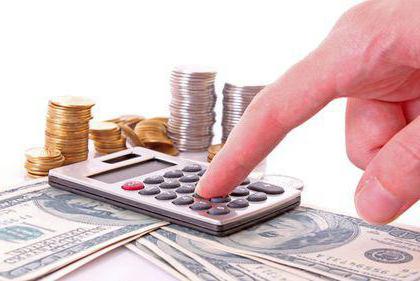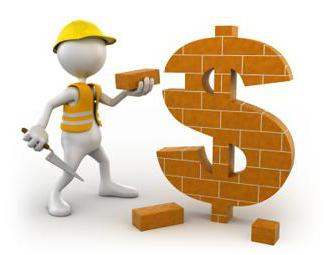The concept of “costs” is used in the process of analyzing the activities of enterprises. In fact, this term becomes synonymous with enterprise costs, and cost classification is necessary for the correct, efficient management of expenses and profit.
Internal and external costs are becoming the subject of close attention of all entrepreneurs. Otherwise, the owner faces ruin, of course, if it comes to honest business.

What is the external, internal costs of the enterprise
Before you begin to cover the topic, it is worth understanding the terminology. There are names that differently refer to the same phenomena. Thus, depending on how internal and external costs are displayed in the financial statements, they can be named as follows:
- Accounting and economic.
- Explicit and implicit.
- Explicit and imputed.

External, accounting or explicit costs is the payment of expenses for resources that do not belong to the owner of the enterprise. These expenses include expenses incurred as a result of the purchase of materials, raw materials, energy resources, as well as the payment of salaries to staff. A characteristic feature of this type of costs is their reflection in accounting documents. That is, their amount, date of payment and purpose are always fixed.
Internal, economic, implicit or imputed costs are those expenses that are incurred as a result of using the personal resources of the owner of the company and are not payable. Their volume is equal to the amount of money that can be obtained for the operation of these resources at the best option.
Types of profit enterprises
By analogy with the types of costs described above, there is a classification types of profit:
- Accounting.
- Economic.
- Normal

The magnitude of the first type depends on external costs, and for calculating the second it is necessary to take into account internal costs as well.
In fact, to calculate economic profit (EP), it follows from the total revenue that is received in the process of selling products that all internal and external costs of production are taken away.
At the same time, when calculating the amount of accounting profit (BP), external expenses are deducted from the total income received from entrepreneurial activity. You can see that the value of BP exceeds the EP by the amount of internal costs, which, in turn, take into account the amount of normal profit (NP).
As an example, the following situation can be considered: the entrepreneur's use of his own premises as an office. If he leased it to another company, he would be able to receive income in a certain amount. In the case when accounting profit from entrepreneurial activity is the same as the average rent that the owner could get by renting this room, we can talk about zero economic efficiency.
At the same time, for all accounting reports, one can trace the presence of positive firm profitability and tangible real profit. However, in reality, an entrepreneur with the same success (and getting the same NP) could rent his office.
Who needs economic profit
As a rule, entrepreneurs rarely deal with calculating economic costs and profits; this is necessary for those who are going to evaluate the profitability of an enterprise from an objective point of view. Typically, such information is needed by consultants, as well as potential or real investors (shareholders).
The purpose of such research and calculations is to protect against possible fraud with accounting reports. Distortion (underestimation) of accounting profit indicators can take place when renting out real estate owned by the entrepreneur. However, intentional or accidental inflation of BP occurs when the company uses stocks and materials purchased during the previous financial period. Regardless of the reasons, such actions lead to the presentation of an incorrect picture of enterprise performance. As a result, shareholders receive false information, but the maximum efficiency of the enterprise in which they invested their funds is directly in their interests.
What does “normal profit” mean?
Normal profit is another important concept that is influenced by volume. economic costs (internal). And external ones also have an effect, which makes analysis easier, because they are easier to calculate.
One of the categories of hidden costs is an article called an “entrepreneurial award”. This concept is introduced to reflect the remuneration of the entrepreneur himself. Often in the process of developing his business, the owner does not accrue a salary, because he is not an employee. It is also possible that the money from which it would be possible to pay dividends is spent on promoting the case.

In such cases, to obtain an objective picture of economic efficiency, the internal costs should include the amount of income (with wages and bonuses) that a business owner could receive if he worked as a hired director at another enterprise.
The need for this article is due to the fact that no matter what the length of the period of “profitable asceticism” the entrepreneur has, sooner or later the amount (if not large) that he “owes” himself will be taken out of circulation.

Ignoring the inevitability of this incident, the owner of the company prevents the maintenance of adequate accounting and the possibility of comparing the effectiveness of the enterprise with the performance of competitors.
In some literature, an entrepreneurial prize is equated to NP. The following definition of normal profit will also be true: this is the minimum amount of payment to the owner of the enterprise for performing entrepreneurial functions.
The value of normal profit to assess the effectiveness of the company
The economic nature of the NP is that in fact this is the price of choosing a particular business. When it comes to a successful enterprise, the rate of normal profit should not be lower than the lost profit from alternative activities.
For an entrepreneur, this is a kind of substitution for what he lost when he did not realize the opportunity in other areas. For this reason, the quantitative indicator of NP cannot be determined by anyone other than himself.
Internal and external costs: examples
Summing up the concepts described above, we can say that implicit costs are the amount of income that could bring the company the necessary resources in case of its beneficial alternative use.
Both internal and external costs must be considered. This measure is necessary so that the owner of the company receives information about the real economic competitive advantages of his business.
The main economic (implicit, domestic) costs include:
- The amount of potential expenses of the enterprise for the operation of objects and objects that belong to the owner of the company.
- Expenses for stocks incurred in the past period.
- The amount of salary that the entrepreneur did not pay himself.
- Normal profit.
These are all implicit expenses (internal). External (accounting) costs are all other expenses, although the determining factor is the display in the financial statements.
External costs:
- The costs of the enterprise for the purchase of raw materials.
- Remuneration of employees of the company.
- Repayment of interest on loans.
- The amount of rent for the land.
- Transportation costs.
- Payment of various consultations, analyzes and examinations.

The value of the length of the period for cost accounting
In the process of analyzing all categories of costs attach great importance to the time factor. To obtain objective data, it should be understood what effect the indicators have on the length of the period for which the costs and available results are estimated.
In this regard, the internal and external costs of the company are analyzed separately in the short and long term.
What is meant by the term "period"
In this aspect, no specific time intervals are meant. Each individual industry applies its own options for determining the short and long term, and their range is quite wide. To distinguish them by duration, take into account the degree of change that the production conditions have undergone.
In the event that the conditions and technologies have remained unchanged, and the production capacities are at a fixed level, a cost-benefit analysis of the company is applied in the context of the short-term period. And, on the contrary, long-term changes in the conditions of the company’s functioning, reorganization, modernization, and reconstruction of production are characteristic. Then we can assume that everything has changed types of expenses (internal and external costs), as this is the result of changes in the value of all resources that are used in the enterprise. To take them into account, completely different methods should be applied. As a result, internal and external costs are variables.

Fixed costs
When the fundamental conditions of production remain stable, all costs of the company can be divided into fixed and variable. The former include expenses, the value of which is not affected by the change (reduction or increase) in the quantity of products that the enterprise produces. This is all the cost of maintaining buildings, vehicles, equipment (depreciation deductions). In addition, rents, interest and expenses associated with administrative staff are also included here.
These and similar costs remain necessary for the company, regardless of how involved production facilities are, reduced or expanded production volumes.
Variables and general expenses
The variables include those costs that are subject to change with different volumes of products that the company produces. These are expenses for the purchase of raw materials, materials, as well as labor costs.
The combination of fixed and variable costs forms such a category as total production costs.
Conclusion
In order to fully evaluate the performance of any enterprise or company, you should study indicators such as external costs, internal costs. The proceeds from entrepreneurial activity become the basis for calculating economic, accounting and normal profit.



